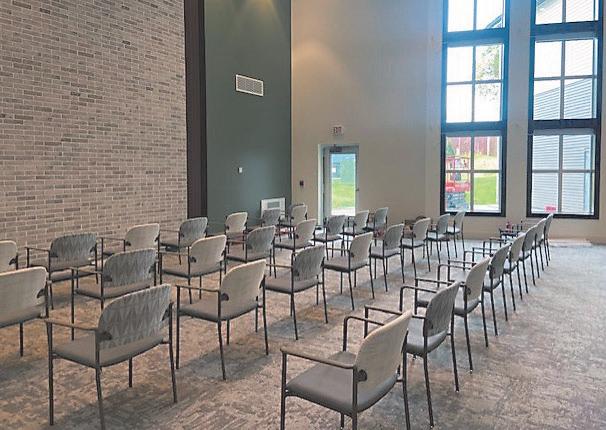










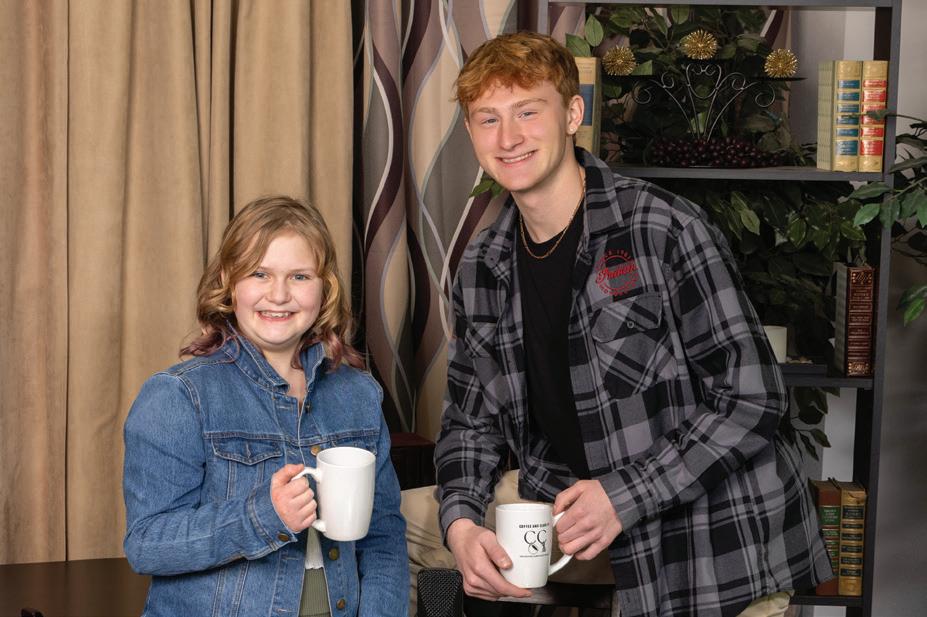

Do you ever think about how significant your child’s friendships are on your student’s behavior? For good or for bad, the influence of friends can be transformative. Ideally, when you reflect, you see the impact of positive peer dynamics on your child’s health, decisions, and overall well-being. Whether they realize it or not, when friends and classmates exhibit positive behaviors like exercising, making good choices, and living above the influence of harmful substances, they set an example that others follow, perhaps subconsciously.
Coalition is a non-profit organization led by a diverse group of Martin County residents who have a passion for helping youth make healthy choices. Formed in 2011, MCSAP functions as a hub of information and resources to help coordinate and support the efforts of substance abuse prevention and the mental and physical well-being of youth. Coalition members include school teachers, police officers, volunteers, nurses, pastors, lay ministers, grandparents, parents, youth, and many others who care about the youth in our communities.
The youth coalition is comprised of students in grades 7-12 at each Martin County high school. Members encourage fellow students to say no to tobacco, alcohol, marijuana, and prescriptions that were not prescribed to them. Student members reach their peers through positive messaging in personal notes, posters, and flyers; training opportunities; distribution of educational information at community events; and coordination of safe and fun activities, among other outreaches. If you are interested in learning more about the youth coalition activities at your school, contact the following advisors: Julie Brudelie, Cairne Eytcheson, Truman; Elizabeth Lowry, Fairmont; Karen Weets, Granada Huntley East Chain; Heather Winter, Laura Ebeling, Martin County West; Lisa Kube, Martin Luther. If you are interested in joining MCSAP or being kept up-to-date on our activities, join our mailing list by emailing director@mcsapcoalition.com. You can also learn more about who we are and what we do through our social media pages. On Facebook and Twitter, we are MCSAPCoalition, and on Instagram, we are under EmpowerMartinCounty. To receive your free subscription to our quarterly Youth Connections Magazine , sign up at https://mcsapcoalition. com/youth-connections/.
This is one reason why peer-led education initiatives are so effective. The information students share is backed up by them modeling wise decision-making using the skills and knowledge they’ve acquired, giving peers a behavioral template to emulate.
Positive peer influence can also bolster resilience in youth and help them stand strong in the face of negative peer pressure. It’s easier to do what you know is right if you aren’t the only one taking that stand. Kids gain courage to adhere to their values and say no to temptation when they know they’re not alone, and this boldness gives other students the courage to stand up for what they know is right. The ripple effect of positive actions has the potential to uplift individuals and exert a beneficial influence on others.
As parents, we breathe a sigh of relief when our kids have good friends and feel like they belong. These relationships provide youth with a safe space and build their confidence, setting them up for success physically, mentally, and emotionally.
Talk to your kids about the power of positive friendships. Encourage them to seek out companions who uplift, support, and inspire them to make healthy choices. In doing so, you empower your children to cultivate relationships that enrich their lives today and help shape the resilient, vibrant adults they’ll become tomorrow.
ON THE COVER: Senior Grant Koehnen, left, and Ava Winter, a seventh grader, are students at Martin County West and involved with the substance misuse prevention group, Empower. They are two of the hosts for Coffee and Clarity: Preventing Substance Misuse , the new Empower podcast. Koehnen enjoys hosting because the information better equips him to lead Empower as president and gives him opportunity to interview people important to the community. Winter enjoys hosting the podcast with friends and learning how people’s roles fit into the prevention patchwork.







• Hy-Vee Choice Reserve is trimmed with only one quarter inch of fat.


• Only an average of 6 out of 100 cattle meet our tight specifications for Hy-Vee Choice Reserve and Hy-Vee Prime Reserve Beef.
• You’re getting the highest quality beef raised on family farms right here in the heartland.
• The best restaurants serve prime beef - the same as our Prime Reserve beef. You can get 5-star beef right in your own backyard at Hy-Vee.




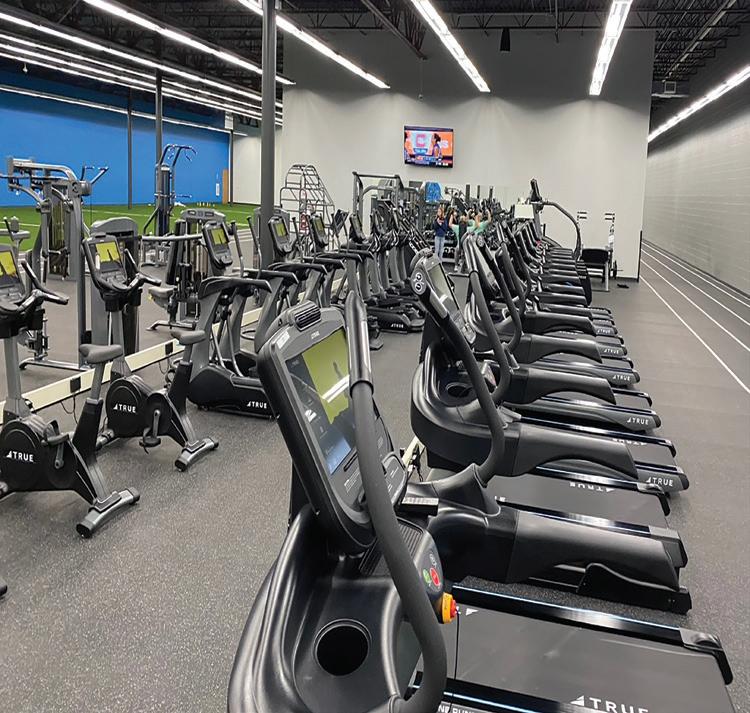





Our schools are an important and influential part of our children’s lives. While spending so much of their time at school, it is inevitable that issues will arise. Building relationships, maintaining communication, and fostering understanding is key for parents who have school-based concerns.
To build a relationship with the teacher(s) and better understand the school climate, or general mood, it helps to visit the school. Take advantage of events like open house, parent teacher conferences, or family nights. While there, visit with as many of the staff as you can. Educators, like librarians and physical education teachers, can offer valuable insight and a different perspective about your student, and other important school issues.
Showing up gives teachers and staff a chance to know you better. It is like putting money in the relationship bank. Then, when issues arise, or you have a question or concern, you have some principle to draw from. This way your relationship stays in the black and nobody is overdrawn.
Being in the school building also allows you to get a read on the “vibe” of the school. Are other children (and parents) excited to be there? Are the teachers and staff welcoming and enthusiastic? Is the school leadership (principals, vice principals, deans, board members) present? Answering these questions can tell you a lot, and give you clues on how to proceed when there are concerns.
Become involved in Parent Teacher Organizations. Give as you can, and volunteer as you are able.
In addition to building relationships, maintaining communication is key. Email is the easiest way for teachers to keep in touch. As a parent, I always start the school year by checking in via email and seeing if there is anything the teacher(s) needs. A pack of whiteboard markers? A coffee?
If I need to touch base with the school nurse or other staff, I always CC my child’s classroom or homeroom teacher, so they are in the loop.
When you hear a troublesome tale about something at school, be sure to take it with a grain of salt. Some of the best advice I ever heard came from a veteran kindergarten teacher. She would tell parents, “If you believe 50% of the stories your child tells about school, I will believe 50% about what they tell me about home.” Deal! My daughter once told her teacher I cooked broccoli inside of socks…ugh! If a story from school seems too weird to be true, it probably is. But don’t be afraid to reach out to the school to ask for clarification. A quick email to the teacher asking for the rest of the story will do the trick.
Once clarified, if you have remaining concerns, gently let the teacher know. Wording such as, “Let’s work together to find a solution” or “Can we set up a meeting to discuss this and find some common ground?” communicates that you disagree but want to be proactive.
When dealing with public schools, keep in mind that many things taught are out of the teachers’ control. What information is taught is decided on state and federal levels. All public schools must follow state-wide standards or National Common Core Standards. How information is taught is decided on a school district level. If your concern is based on what or how information is taught, reaching out to the principal is your best bet – but don’t forget to CC the teacher(s).
During their school career, your student will probably have a handful of difficult teachers that they just don’t “click” with. If your child is stuck with a teacher whose personality just does not mesh, take it as a learning experience in dealing with difficult people. Play up the other educators (librarian, music teacher, etc.) at the school and encourage them to foster those relationships.
If your child has an especially bad day at school, whether it has to do with teachers or peers, it helps to have other positive and supportive communities to turn to. Don’t forget the power of youth groups, sports teams, and other extra-curriculars as a part of your child’s support system.
Our children are our most precious resource. Both parents and educators recognize the time, love, and dedication that goes into raising them. Work as a team to remember this common ground and make school a positive experience for all. ■
For many of us the kitchen table represents the typical family experience. We have laughed while
many cakes. We have argued our way out of doing the dishes. We have struggled
hard work! If you have a story of lessons learned, we invite you


Behavioral activation is the process of proactively increasing your activity level of positive activities. Behavioral activation strategies can be traced back to B.F. Skinner’s 1957 book, Science and Human Behavior, and were further elaborated in 1973 in Charles Ferster’s paper, “A Functional Analysis of Depression.” Dr. Ferster wrote, “The critical factor is a fixed and large amount of activity.”
In a 2009 research meta-analysis by Mazzucchelli and colleagues, behavioral activation was shown to be substantially more beneficial than placebo in the treatment of depression in over 16 medical studies. Behavioral activation can help major depression tremendously and can also be a strategy to prevent mental illness in times of stress and uncertainty, such as the loss of a job, having a child, the loss of a loved one, or other major life transitions.
I have heard countless stories from friends, family and patients about the negative impact on their mood after transitioning from a high activity level to a low activity level. Think about the times in your life when your mood crashed after a major accomplishment or task. Shouldn’t you have been on cloud nine? The drop in mood could be related to your life being completely out of balance and feeling exhausted by the time you completed your goal or project, but it also could have been due to moving from a high activity level to a low activity level or moving from a structured, goal-oriented schedule to no schedule at all. You can protect your mental health through behavioral activation.
When someone is depressed, they lack energy, motivation and enjoyment, which leads them to stop doing the activities that normally help them feel good. Their resulting inactivity then worsens their depression.
Behavioral activation is about forcing yourself to do meaningful activities that are in line with your values – the things you do when you’re not depressed. When a depressed person puts themselves on a schedule filled with positive activities, they are sending powerful signals to their brain to wake up and function. A busy schedule with cognitive activation makes the brain function in a non-depressed way and stimulates neural pathways that are underactive in depression. And even if someone with depression doesn’t experience as much enjoyment as normal
continued on page 9

United Hospital District is a proud supporter of the Martin County Substance Abuse Prevention Coalition.
In serving the community, UHD is excited to see patients at our new clinic location at 1950 Center Creek Drive in beautiful Fairmont. Our new clinic will offer
State-of-the-art
Upgraded capabilities for procedures

2
continued from page 7
with positive activities, chances are they will feel better than they would have if instead, they had done nothing.
While there can be both positive and negative effects of going to work or school, I do think that going to work or school is a form of behavioral activation. It can increase stress/anxiety but it also often helps depression. This is part of why I try to get my depressed patients back to work and school as soon as possible. Work and school can:
• Put people on a schedule
• Make them get up and stay out of bed
• Cause them to use their brain to accomplish tasks
• Increase social connectedness
• Distract from negative thoughts
• Enhance safety (reduce the risk of suicide) by increasing social contact
• Provide meaning through learning and contributing to others (projects, groups, communities)
• Result in the reward of a paycheck or satisfaction of improved grades
Sometimes people want to take a mental health day from school or work. In reality, mental health days can be good or bad. If your idea of taking a mental health day is staying in bed all day, then doing so is probably a bad idea. Most people who stay in bed or on a couch in their pajamas all day feel worse, not better. Make sure that you don’t use your mental health day to feed your depression. Instead, use your mental health day for positive, creative activities and catching up on things you need to get done. These kinds of mental health days are healthy and restorative.
The best strategies involve scheduling many activities with variety. Start by forcing yourself to do the things you would normally do when you were not depressed. These are activities that you enjoyed in the past or that you would do to charge up your batteries. If you are depressed, you may not enjoy these activities as much as when you were depression-free, but they will still help.
Even if you do not have depression, behavioral activation strategies are good for your emotional well-being. You deserve this. Think about how it would feel to end the day and say, “I had a busy day. It was a little stressful and I’m tired, but I had fun and got a lot done.
Begin by getting up and getting ready in the morning. Get exercise and do creative things. Do some necessary tasks around the house and then leave the house. Don’t make decisions about what to do based on how you feel. Make a rational, not emotional, decision about whether you are going to do an activity or not. Make decisions that are in line with your values. When adding activities to your schedule, try to broaden your range of activities, maybe including things that are opposite ends of the spectrum or engage all of the senses (sight, smell, touch, taste, hearing):
• Social and solitude
• Nature and indoors
• Art and puzzles
• Playing music and listening to music
• Physical activity and meditation
• Entertainment activities and meaningful service
1. Go to the gym before you go home from work.
2. Limit naps to less than one hour per day.
3. Go for a walk in nature.
4. Call a friend.
5. Think of tasks you have been putting off. Pick the quickest, easiest one to complete and do it.
6. Draw a picture or doodle.
7. Turn on the radio and find the station that you like the most.
8. Play your favorite song and sing along with it (no matter how good or bad you are at singing).
9. Go to a hot yoga class (no matter how fit or inflexible you may be).
10. Go to a coffee shop, sit down and savor your drink.
11. Think about a social issue you care about and call someone related to that cause. See what simple opportunities there are to volunteer.
12. Go to a movie.
13. Go to a museum.
14. Visit a flower shop or a greenhouse.
15. Go and listen to live music.
16. Plan for a visit to a new restaurant or get take-out.
17. Complete a puzzle, sudoku or crossword puzzle.
18. Download a podcast on meditation or mindfulness, listen to it and follow the cues.
19. Do a physical activity you haven’t done in a while: ride a bike, hit a tennis ball, kick a soccer ball, go cross country skiing, go swimming, hit a golf ball, go for a hike or a jog.
20. Write down on a piece of paper three things you want to do before January 1 of next year.
If you are willing to make changes in your life to increase your behavioral activation, you are likely to become less depressed. Even if you do not have depression, behavioral activation strategies are good for your emotional well-being. You deserve this. Think about how it would feel to end the day and say, “I had a busy day. It was a little stressful and I’m tired, but I had fun and got a lot done.” An active day will help your sleep, your emotional health and your physical health. Taking care of yourself by planning and scheduling healthy activities is a proven strategy for starving out your depression and enhancing your mental and physical health. ■
Check out who’s standing out in our community.
Please email shelly@mcsapcoalition.com and tell us why this individual has stood out in your crowd.

Braelyn is an exceptional student with many talents and achievements. Since seventh grade, she has been actively involved with MCW music, earning excellent and superior ratings at vocal contests, singing at the Dorian vocal festival, and enjoying musical theater. Braelyn also regularly performs the national anthem at school sporting events. She played key roles in MCW’s Footloose and Clockwork and was Ariel in The Little Mermaid. She is involved with FFA in various activities including Horse Judging and Talent. She is a member of the MCW Knowledge Bowl team and captain of the speech team while maintaining a 4.0 GPA. She plans to study music therapy in college. Outside of school, she is an election judge and attended American Legion Auxiliary Girls State.
Isaac is top of his class and has a passion for aerospace engineering. His award-winning project at the 2020 National History Day competition was “Breaking Barriers of Space: Apollo 11.” He interned last year with NASA’s Minnesota Space Grant Consortium working with undergrads on weather ballooning projects. He already is proficient in 3D printing, computer-aided design, and other related applications. He also is captain and programming leader for Team 2847 Megahertz, Fairmont’s robotics team, which placed 31st at Worlds and took State in 2023. He also mentors MCW’s robotics team, coaches the elementary VEX team which also made it to state last year, and referees VEX events locally. He uses his Spanish proficiency to help English-language learners and loves introducing them to STEM activities.

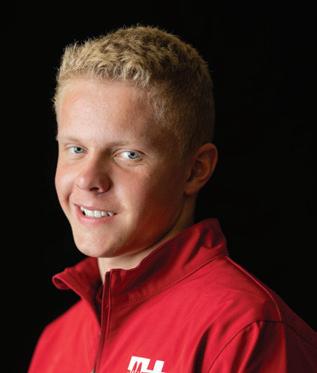
Meet Layla, an outstanding student and a varsity track athlete who has lettered every year since seventh grade and also participates in volleyball and basketball. As an FFA member, she serves as the chapter’s reporter and holds the prestigious Greenhand Degree. Layla also showcases her musical talents in the school band, excels in PSEO classes, and consistently makes the honor roll. Beyond academics and sports, she calls a small farm home, where she tends to Scottish Highland cattle, pigs, chickens, geese, ducks, and turkeys. ”I also have some dogs and cats that run around the farm,” she said. She is a well-rounded individual, successfully balancing academics, sports, and life on her family’s farm.
Since her freshman year at MLHS, Emma has participated in nearly every extracurricular at the school including drama, spirit club, Knights4Life, Empower, newspaper, and yearbook. She also is involved in choir and fall and spring trap. She is an excellent student who volunteers summers as a youth servant leader at Camp Omega. She showcases her creativity by editing videos in her spare time, a skill honed with guidance from her media class teachers, Bruce and Shelly Abitz. “Emma is in her third year of Empower and first year as our Empower president,” said substance misuse prevention group advisor Lisa Kube. “Emma played an important part of taking the Empower message to area elementary schools last year and plans to do the same this year.”

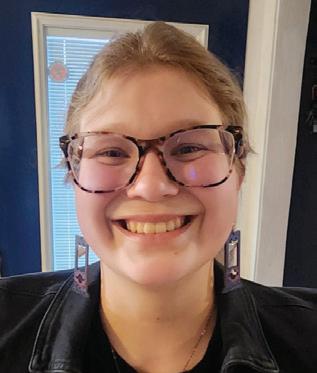
Carson is a multi-talented and dedicated student with a passion for sports, agriculture, and community involvement. He is a forward in basketball, a shortstop in baseball, a baritone in the choir, and a regular on the honor roll. His extracurriculars include serving as the club treasurer for Waverly-Westford 4-H, showcasing his Dorset lambs, and participating in 4-H livestock quiz bowl. Carson is reporter for the Truman FFA chapter, and his favorite FFA activity is the General Livestock Career Development Event. His commitment to community extends to his involvement in his church’s youth group.
“Something a little unique about me is that, instead of coffee in the morning, I drink hot chocolate,” he said.





40 Developmental Assets are essential qualities of life that help young people thrive, do well in school, and avoid risky behavior.
Youth Connections utilizes the 40 Developmental Assets Framework to guide the work we do in promoting positive youth development. The 40 Assets model was developed by the Minneapolis-based Search Institute based on extensive research. Just as we are coached to diversify our financial assets so that all our eggs are not in one basket, the strength that the 40 Assets model can build in our youth comes through diversity. In a nutshell, the more of the 40 Assets youth possess, the more likely they are to exhibit positive behaviors and attitudes (such as good health and school success) and the less likely they are to exhibit risky behaviors (such as drug use and promiscuity). It’s that simple: if we want to empower and protect our children, building the 40 Assets in our youth
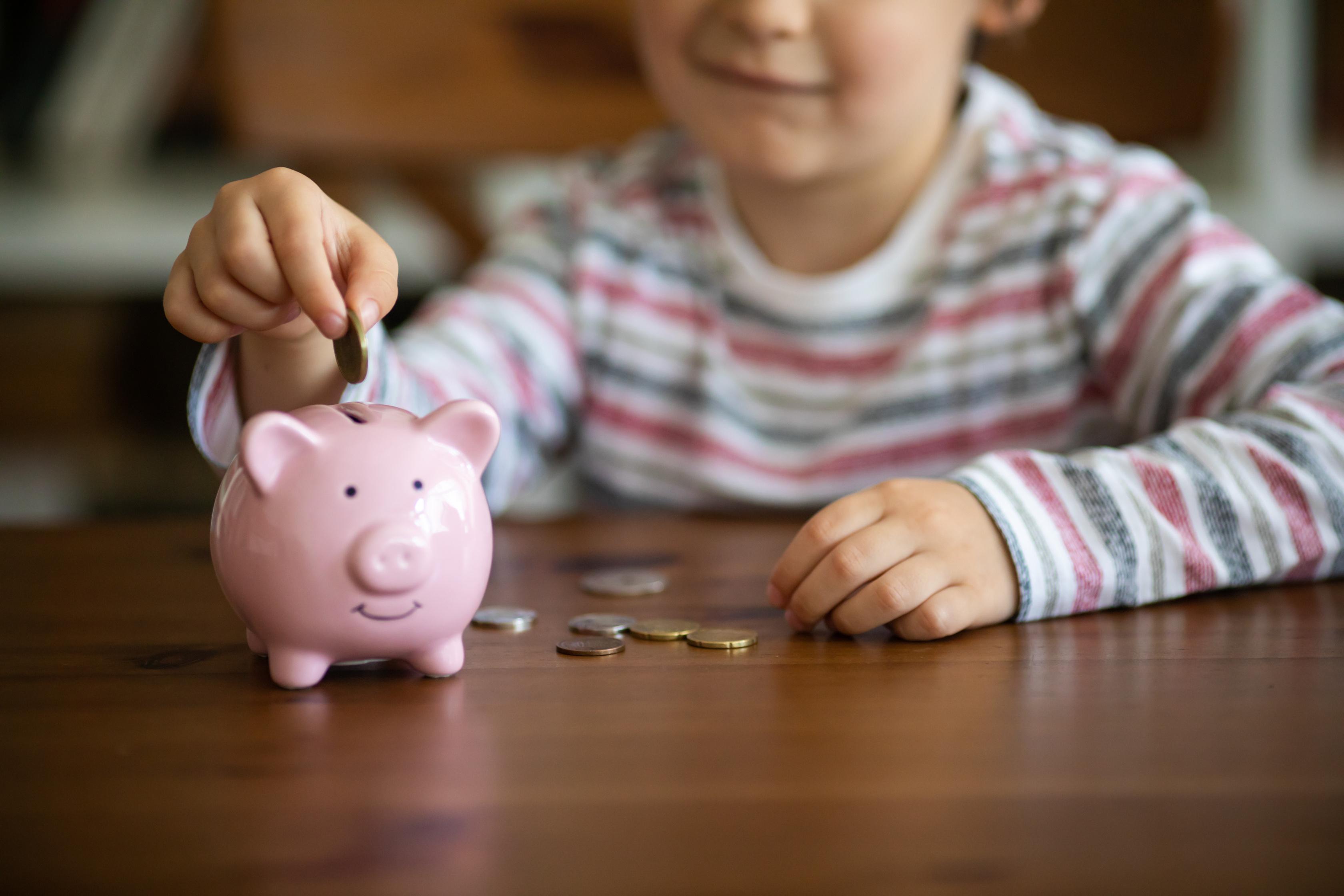
Look over the list of Assets on the following page and think about what Assets may be lacking in our community and what Assets you can help build in our young people. Do what you can do with the knowledge that even through helping build one asset in one child, you are increasing the chances that child will grow up safe and successful. Through our combined efforts, we will continue to be a place where Great Kids Make




1. Family support: Family life provides high levels of love and support.
2. Positive family communication: Young person and her or his parent(s) communicate positively, and young person is willing to seek advice and counsel from parent(s).
3. Other adult relationships: Young person receives support from three or more nonparent adults.
4. Caring neighborhood: Young person experiences caring neighbors.
5. Caring school climate: School provides a caring, encouraging environment.
6. Parent involvement in school: Parent(s) are actively involved in helping young person succeed in school.
7. Community values youth: Young person perceives that adults in the community value youth.
8. Youth as resources: Young people are given useful roles in the community.
9. Service to others: Young person serves in the community one hour or more per week.
10. Safety: Young person feels safe at home, at school, and in the neighborhood.
11. Family boundaries: Family has clear rules and consequences and monitors the young person’s whereabouts.
12. School boundaries: School provides clear rules and consequences.
13. Neighborhood boundaries: Neighbors take responsibility for monitoring young people’s behavior.
14. Adult role models: Parent(s) and other adults model positive, responsible behavior.
15. Positive peer influence: Young person’s best friends model responsible behavior.
16. High expectations: Both parent(s) and teachers encourage the young person to do well.
17. Creative activities: Young person spends three or more hours per week in lessons or practice in music, theater, or other arts.
18. Youth programs: Young person spends three or more hours per week in sports, clubs, or organizations at school and/or in the community.
19. Religious community: Young person spends one or more hours per week in activities in a religious institution.
20. Time at home: Young person is out with friends “with nothing special to do” two or fewer nights per week.
If you or your child would like to submit a picture that represents one of the 40 Developmental Assets, please email shelly@mcsapcoalition.com with a picture and the number of the asset the picture represents.
Not all pictures are guaranteed publication.
21. Achievement motivation: Young person is motivated to do well in school.
22. School engagement: Young person is actively engaged in learning.
23. Homework: Young person reports doing at least one hour of homework every school day.
24. Bonding to school: Young person cares about her or his school.
25. Reading for pleasure: Young person reads for pleasure three or more hours per week.
26. Caring: Young person places high value on helping other people.
27. Equality and social justice: Young person places high value on promoting equality and reducing hunger and poverty.
28. Integrity: Young person acts on convictions and stands up for her or his beliefs.
29. Honesty: Young person “tells the truth even when it is not easy.”
30. Responsibility: Young person accepts and takes personal responsibility.
31. Restraint: Young person believes it is important not to be sexually active or to use alcohol or other drugs.
32. Planning and decision making: Young person knows how to plan ahead and make choices.
33. Interpersonal competence: Young person has empathy, sensitivity, and friendship skills.
34. Cultural competence: Young person has knowledge of and comfort with people of different cultural/racial/ethnic backgrounds.
35. Resistance skills: Young person can resist negative peer pressure and dangerous situations.
36. Peaceful conflict resolution: Young person seeks to resolve conflict nonviolently.
37. Personal power: Young person feels he or she has control over “things that happen to me.”
38. Self-esteem: Young person reports having a high self-esteem.
39. Sense of purpose: Young person reports that “my life has a purpose.”
40. Positive view of personal future: Young person is optimistic about her or his personal future.



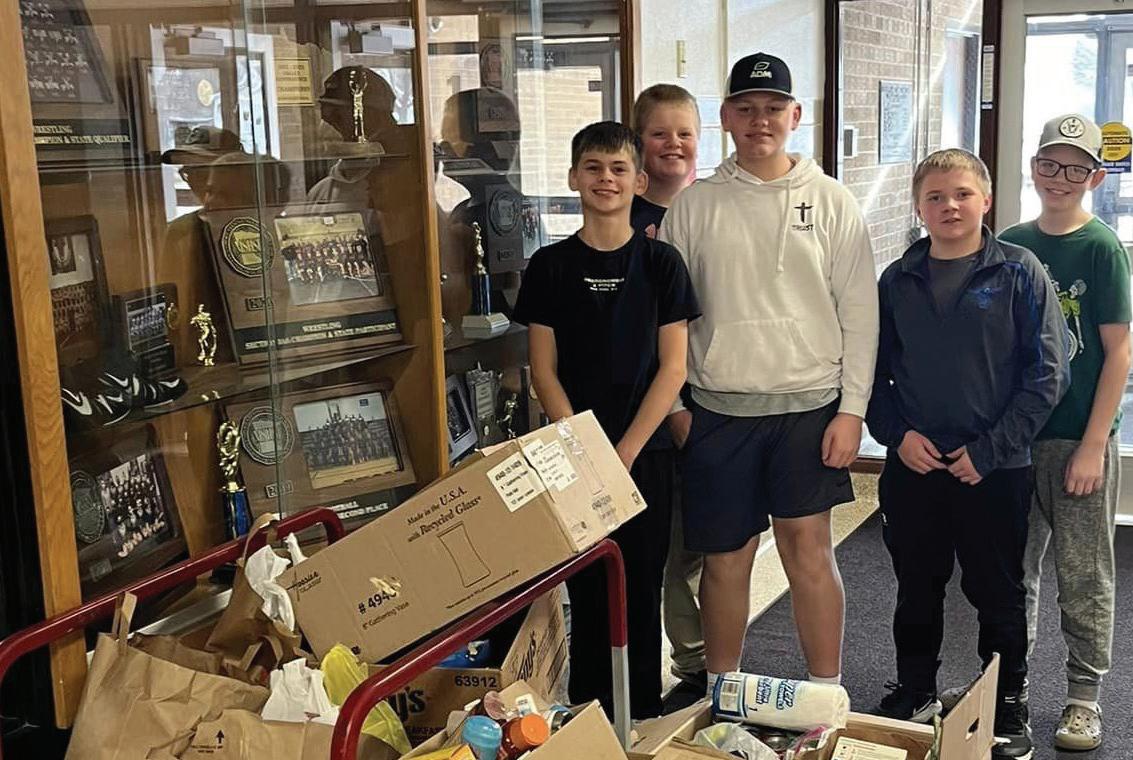

There’s no question that your kids will be exposed to and learn about drugs and alcohol. They will learn from television shows, movies, social media, and their friends. And almost everything they learn will be unhelpful and misleading at best – dangerous at worst.
Here are eight conversations you should have with your kids. As awkward as they might be, the consistency and honesty with which you approach these discussions will make a big difference for them. Be cool and casual about it. Be honest, open, and authentic – kids can smell inauthenticity a mile away.
#1 THE ‘DRUGS AND ALCOHOL ARE REAL AND DANGEROUS’ CONVERSATION For adults who struggle with life-destroying addictions, 90% of them started when they were kids. However, research has shown that teens who consistently learn about the risks of drugs from their parents are up to 50% less likely to use drugs than those who don’t.
Here are some triggers to remind you to have the conversation:
• When you’re watching a movie together and someone on screen is using a substance
• When you come across someone who is under the influence – help your kids interpret why that person is acting strange
• When you or others around them drink alcohol or smoke
#2 THE ‘YOU’RE NOT THAT SMART, YET’ CONVERSATION It’s important for you to realize, and for your kids to know, that they aren’t capable (yet) of making wise and informed decisions for themselves. Because of the massive reconstruction of their brains during adolescence, they lack the executive functioning skills to think reflectively about their values, their future state, or consequences.
Neuroscience has learned the brain is not fully developed until around twenty-five years old. We need to help kids make smart and healthy choices.
#3 THE ‘LET’S TALK ABOUT WHO YOUR FRIENDS ARE’ CONVERSATION The real danger of peer pressure is an internal thing happening inside the kid. It’s their desire for acceptance that drives them. The values, priorities, and perspectives your kid will adopt as a teenager will be way more influenced by their peers than by their parents. That’s why it’s so important to be involved in their friendships – at the very least to know their friends on a personal level.
#4 THE ‘LET’S FIND YOUR NATURAL HIGH’ CONVERSATION One of the most annoying things kids say to their parents has to be, “I’m bored.” Kids today have more entertainment options than ever before.
Boredom, however, is a problem. The opposite of boredom isn’t entertainment, it’s engagement. Kids who are engaged, connected,
involved, and busy have fewer opportunities to engage in risky behaviors. We need to learn how to engage kids by challenging them, provoking their curiosity, and giving them the space to explore what bugs them.
#5 THE ‘FAMILY HISTORY’ CONVERSATION It’s really important that our kids have an appropriate sense of where and who they come from. Most families have a tendency to shield their children from the faults of their family members, but issues like addiction leak down through the generations. If our kids aren’t aware of the issues they’re being exposed to and predisposed to, they will be less likely to face their challenges effectively. The worst thing we can do is to pretend like nothing is wrong – they’ll just be confused and, at worst, learn to distrust their own gut and intuition.
#6 THE ‘LET’S TALK ABOUT ANXIETY AND STRESS’ CONVERSATION It’s stressful to be a human. Stress and anxiety aren’t always negative. In fact, stress and anxiety are often the beginning of personal growth. Resilience is a quality that strong people have. It’s an attribute that is shaped through experience and reflection.
We can have conversations where we affirm our kids and let them know how they’re demonstrating resilience and grit by choosing to stay engaged in their learning, making healthy choices for themselves, and reaching out to stay connected with friends. Let them think for themselves to help them grow in self-awareness and discover their own inner capacity to face hard things.
#7 THE ‘I WILL LOVE YOU NO MATTER WHAT – YOU CAN ALWAYS TALK TO ME’ CONVERSATION Even if we’re scared, angry, or disappointed, kids need their parents to be their safest place; the people they can always turn to – no matter what.
That’s a really hard line to hold, isn’t it? Our kids can frustrate us, make decisions that disappoint us, and confound our common sense.
That being said, we still need to have this conversation repeatedly throughout the years of growing up. Our kids need to know they don’t need to be perfect, and it’s okay to make mistakes. It’s how the entire process of growing up works.
#8 THE ‘LET’S IMAGINE YOUR FUTURE’ CONVERSATION
Our kids are our pride and joy. Nothing matters more than their happiness and fulfillment – who they are, who they become, and what they do in the world.
But who they become and what they do in the world is largely out of our control. We can only do so much to create a healthy, firm foundation for them, and then the choice is theirs. (Read the full article for an activity on this topic – see link below.)
These aren’t one-time conversations – they’re discussions to have continuously throughout the years. ■
*This article is abbreviated. To read its entirety, visit https://www.naturalhigh.org/8-conversations-with-teen-about-drugs-alcohol/. Also check out all the other great resources on their website.
In a world where extracurricular activities for children are becoming increasingly prevalent and competitive, there’s a growing awareness of the importance of allowing kids the freedom to choose, explore, and, sometimes, quit activities they’re no longer interested in. The decision to allow children to quit an activity can often be met with hesitation and concern. Parents may fear that letting their child abandon a commitment sends the wrong message about perseverance and dedication. And while perseverance and commitment are valuable traits, it’s equally crucial to recognize when a child may need a change. There is a growing body of research and expert opinions that suggest allowing kids to quit certain activities can foster a sense of autonomy and contribute to their overall well-being.
Children go through phases of exploration, trying different hobbies, sports, or clubs to find their passions. Allowing them to quit an activity encourages self-discovery. When they realize an activity doesn’t resonate with them, it opens the door for finding something they are genuinely passionate about. This self-discovery process can lead to a stronger sense of identity and self-awareness.
Overloading children with too many activities can lead to burnout and stress. Stress can manifest in various ways, including behavioral issues, difficulty concentrating, and even physical symptoms. Kids have their own unique limits and energy levels and pushing them to persevere in an activity they no longer enjoy can have negative consequences. Allowing them to quit when they feel overwhelmed can help reduce stress and maintain a healthier balance in their lives.
Granting children the autonomy to decide when to quit an activity empowers them to make decisions about their own lives. This fosters a sense of independence and self-
By creating an environment where children feel safe discussing their interests and concerns, parents can better understand their child’s evolving preferences. This can strengthen the parent-child relationship and foster trust.
reliance, skills that will prove invaluable as they grow into young adults. Kids who have the ability to make choices regarding their activities are more likely to develop a strong sense of responsibility.
When children are coerced into continuing an activity they dislike, it can lead to a negative association with learning and hinder the development of independent decision-making skills.
While quitting an activity is valuable, teaching children the importance of perseverance and commitment is equally crucial. Encouraging kids to finish what they’ve started, even when it gets tough, can help develop resilience. However, there are instances when quitting is a sensible choice, such as when an activity is genuinely detrimental to a child’s mental or physical health. It’s essential to differentiate between temporary challenges and a genuine loss of interest. Understanding the difference between quitting out of convenience or frustration and quitting for the sake of personal growth is an important lesson.
In today’s fast-paced world, children often experience immense pressure to excel in various aspects of their lives. Parents need to be mindful of not trying to live vicariously through them or pushing them to be as good as they were in their youth. Allowing kids to quit an activity when they’re no longer enjoying it prioritizes their mental and emotional well-being. Mental health is just as important as physical health, and maintaining a positive emotional state is essential for a child’s overall development.
Allowing kids to quit an activity also promotes open communication between parents and children. By creating an environment where children feel safe discussing their interests and concerns, parents can better understand their child’s evolving preferences. This can strengthen the parent-child relationship and foster trust. It’s important that kids never fear letting their parents down by sharing that they don’t enjoy an activity anymore.
In the grand scheme of a child’s development, allowing them to quit an activity is a practice that can offer numerous benefits. It fosters self-discovery, reduces stress, and promotes autonomy, resilience, and emotional well-being. However, it’s crucial to strike a balance between allowing kids to quit and encouraging commitment. Teaching children when it’s appropriate to persevere and when it’s okay to let go is an invaluable life lesson. By respecting their choices and supporting their evolving interests, parents can help children grow into well-rounded individuals who are capable of making informed decisions about their own lives.
Ultimately, the goal is to guide children toward activities that bring them joy and fulfillment, nurturing a lifelong love for learning and exploration. ■
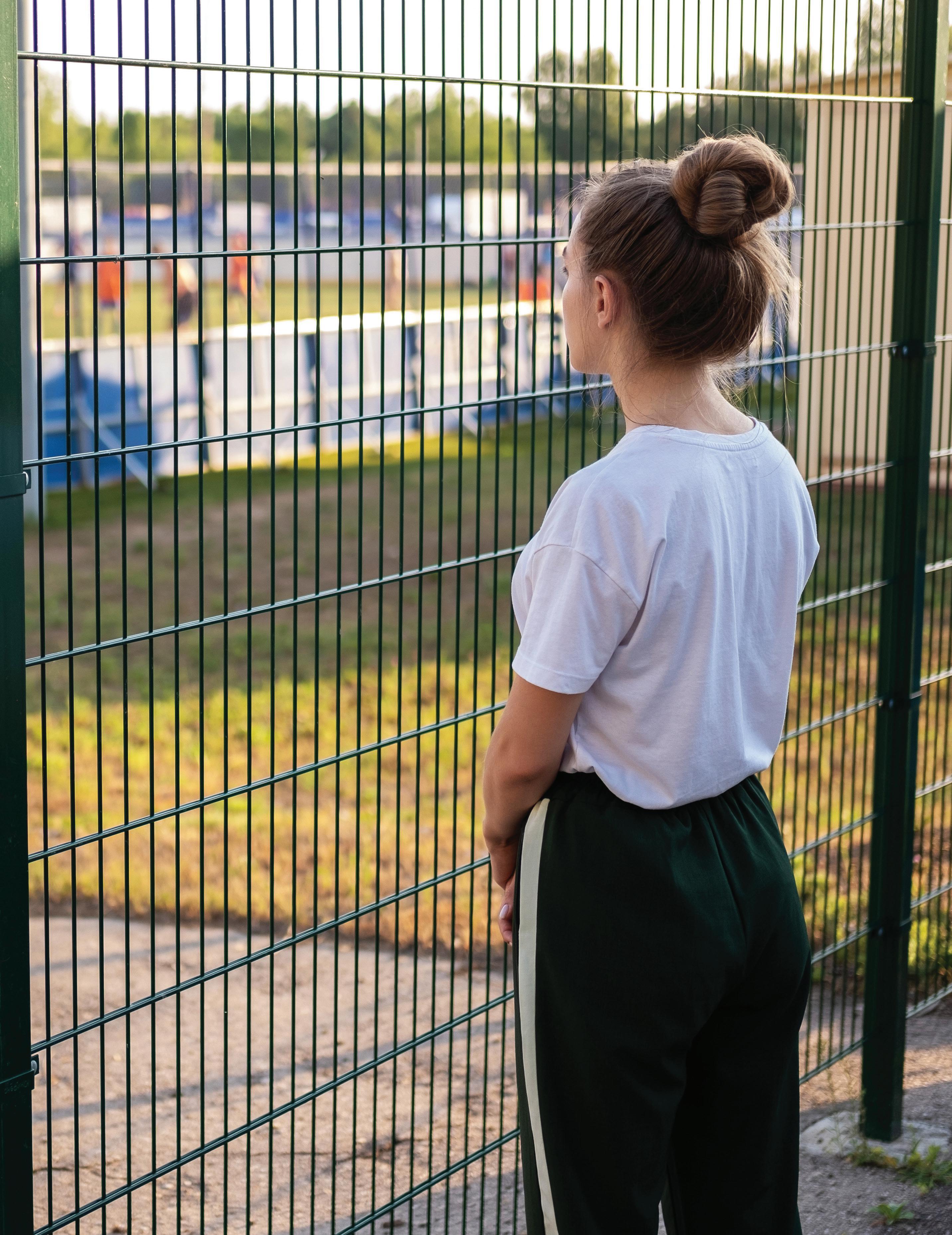
Keeping kids active during the winter can be a fun challenge. Here are some ideas to ensure they stay active and engaged:
OUTDOOR WINTER SPORTS:
• Skiing and Snowboarding: Consider enrolling them in skiing or snowboarding lessons. Cross-country skiing can be done almost anywhere.
• Ice Skating: Take them to a local ice skating rink – whether it be indoor or outdoor.
• Sledding: Find a safe and suitable hill for sledding. It’s not only a thrilling activity but also a great workout.
INDOOR SPORTS AND ACTIVITIES:
• Indoor Swimming: Look for indoor swimming pools or community centers with swimming facilities.
• Basketball or Soccer Leagues: Check around for groups that offer youth leagues.
• Rock Climbing: Indoor rock climbing is a fantastic way to build strength and endurance.
WINTER NATURE WALKS: Bundle up and take nature walks in the winter. Explore parks or nature reserves to observe winter wildlife and enjoy the crisp air.
WINTER OBSTACLE COURSES: Create an indoor obstacle course using household items. This can include crawling under tables, jumping over cushions, and climbing over soft obstacles.
WINTER GARDENING: If you have a garden, involve the kids in winter gardening activities like planting winter-friendly vegetables or creating bird feeders.
WINTER SCAVENGER HUNT: Create a winter-themed scavenger hunt. Include items like icicles, pinecones, or animal tracks in the snow.
DIY WINTER CRAFTS: Engage in indoor activities like crafting winter-themed items. This could include making snowflakes, creating winter scenes, or even simple DIY projects.
YOGA FOR KIDS: Introduce them to kid-friendly yoga. There are many online resources and videos designed specifically for children.
WINTER CAMPS AND CLASSES: Check out local community centers or organizations that offer winter camps or classes. These might include arts and crafts, science experiments, or other active pursuits.
FAMILY FITNESS CHALLENGES: Make fitness a family affair by setting up challenges or competitions. This could be anything from who can do the most jumping jacks to a friendly race around the house.
Remember to consider safety precautions, especially in cold weather. Dress appropriately, stay hydrated, and make sure the activities are suitable for the age and fitness level of the children involved.

66
The percentage of their life a cat sleeps
68
The percentage that stress is relieved by reading


800
The amount in tons of chocolate sold at the Brussels Airport each year
46,001
The number of pushups performed in one day


9
The weight in pounds of an elephant’s tooth


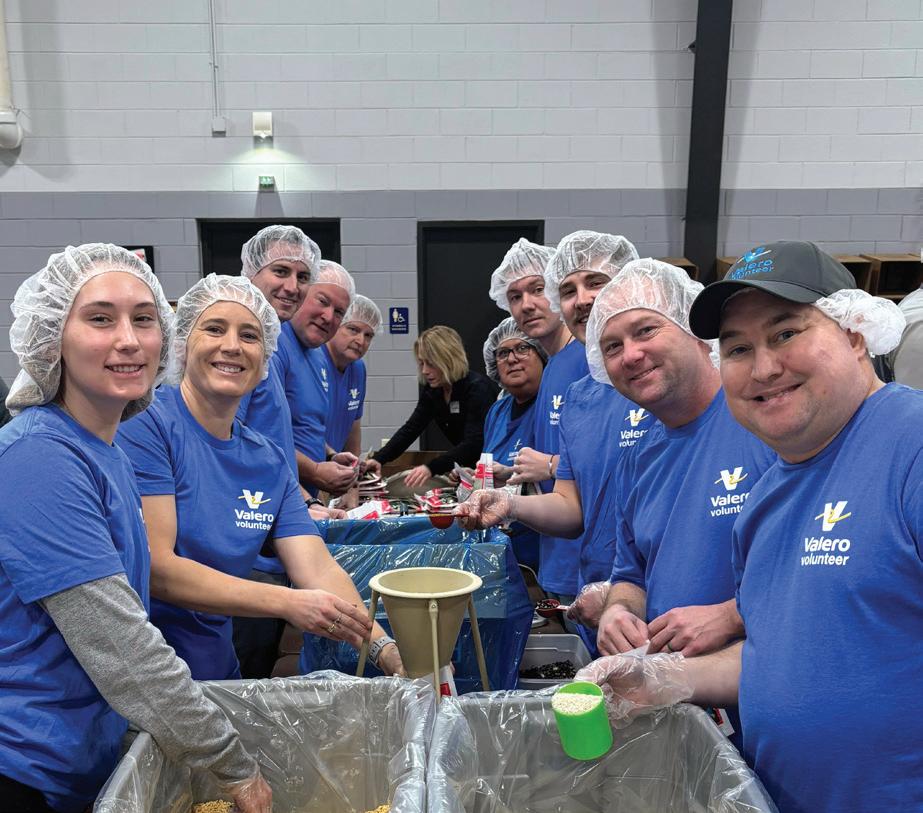


Parents who think they can monitor their kids’ social media are like thinking they can beat a professional basketball player one-on-one. Kids are actual professionals at social media and parents are not. Kids have coaches and technical support teams (other kids) that advise them every day. Parents have their work group or friends of three or four people who share what they think they know about kids and social media.
One of my main concerns with kids being on social media is their ability to talk to strangers. Omegle has a slogan of “Talk to Strangers.” It has been around for a while and is not an application any child should be on.
Omegle does not have a sign-up requirement so you can be talking to strangers in a matter of seconds by clicking two checkboxes verifying you are 18 and will abide by their terms of service.
Once connected, Omegle connects you with a random person in the world by video, audio, and chat. If you don’t like the connection, you select “next” and it takes you to the next random person in the world. If people were decent, this would actually be a great exploratory program to discover other people in the world and learn a great deal about other cultures. Unfortunately, that’s not what happens.
As you click next on Omegle, what you find pretty quickly is that there are many people on there who are naked and want to talk to you live. As you click through there are multiple x-rated scenes. Equally as disturbing are the chat screens that had groups of young girls (middle school) who were watching together and clicking “next” to go to the next person. I can only imagine the scenes they were experiencing on this platform.
Because there is no sign up, Omegle users are very anonymous and there is no way for police to track them if needed.
Think your child would not watch or use Omegle? It’s one of the popular “shock” applications kids like to show each other at school. Middle schoolers in particular love to show their friends what is on there. So, your child is in danger of seeing absolute craziness even without having a phone.
Some applications such as Snapchat have
The only way parents will win this game is by taking children out of their pro-environment and spending non-screen time with them. Parents are the leaders of their family and should spend time teaching values and ethics to their children, so apps don’t.
the potential and often do change your child forever. I highly recommend no Snapchat before 18. TikTok, Instagram, Telegram, and other applications will brainwash your children.
Snapchat and Telegram are currently the top drug dealing applications. Did you know kids can log into Snapchat on their school issued Chromebooks? If you want to test your child’s Chromebook, go to the website now.gg and see if it comes up.
Want a second test? From Google Maps type in “Milk Island” and check out the many videos under pictures. Milk Island allows kids to see TikTok videos and more without monitoring software catching on. In the reviews and photos, people post videos that are sometimes inappropriate. Google deletes inappropriate videos about once a week, but they always come back.
Here is a list of the most addicting apps you need to be careful of.
SNAPCHAT is by far the most popular for its ability to hide things from parents. Even
if you are friends with them with your own Snapchat account you can be muted to only see what they want you to see. Parents have no idea how much mental manipulation happens here.
TIKTOK is the up-and-coming brainwashing machine. Many trends are being started and guided by older men so your kids will be easier victims. It is common to see innocent videos posted by 12-year-old girls showing 20k–100k likes by random users.
INSTAGRAM is also on the list because parents think they understand this app better than others. Conversations, pictures, and accounts can easily be hidden from parents; it’s called vanishing mode. Here’s how to use it:
Open a one-on-one chat window with someone on your friend list. Swipe up from the center of the screen to enter vanish mode. Note that any messages, pictures, or videos sent in vanish mode will vanish after they have been viewed. Unfortunately, there isn’t a straightforward way to know if your child has been using it.
FORTNITE will still get your kids very addicted. I have been to more than a few 911 calls where kids melt down when they have to stop playing this game. Many a parent has felt hostage in their own house to this game.
Unfortunately, installing monitoring software to keep up with kids’ social media is equivalent to thinking that buying a new pair of basketball shoes will allow you to beat a pro player. You are not going to win by putting on a pair of shoes.
If your kid has a smart phone, I highly recommend monitoring software as a way to help control technological issues. I am just advising that software alone will not stop most kids. I see way too many parents who over-rely on software to patrol their kids’ online life. The only way parents will win this game is by taking children out of their proenvironment and spending non-screen time with them. Parents are the leaders of their family and should spend time teaching values and ethics to their children, so apps don’t. ■
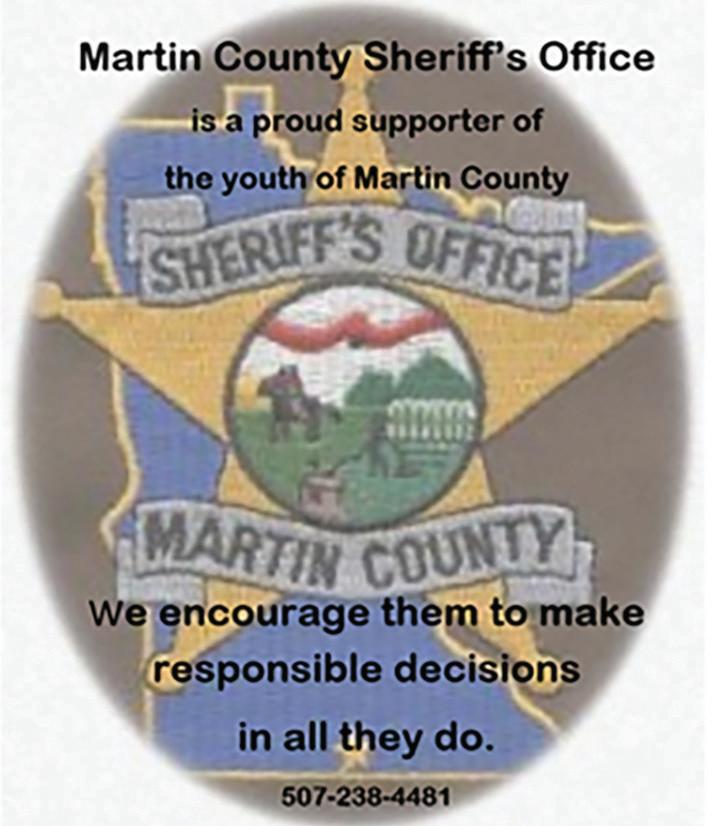
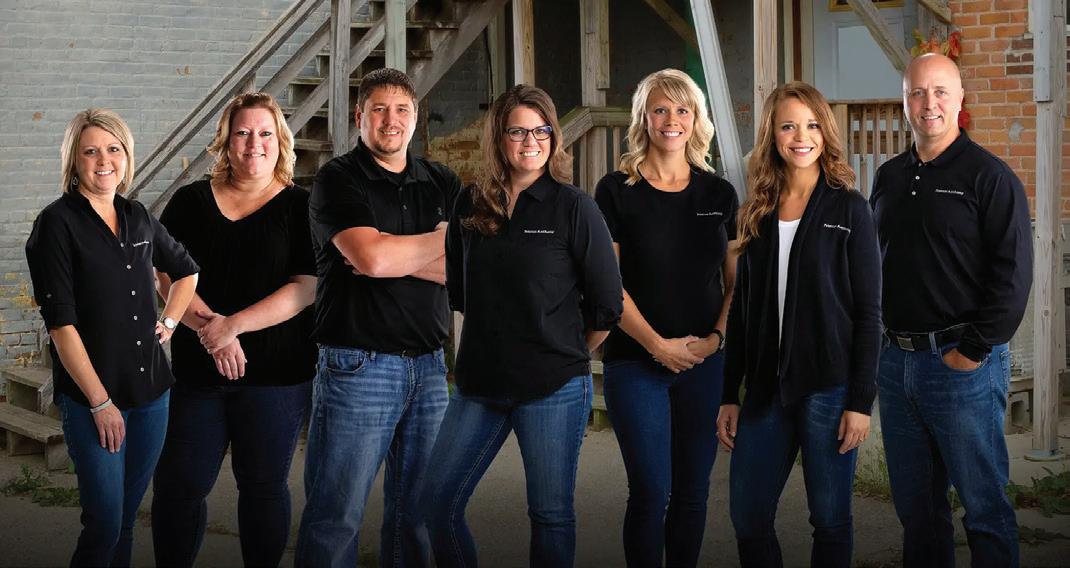





Kratom, a tropical tree native to Southeast Asia, has gained popularity in recent years as a natural alternative to traditional painkillers and mood enhancers. However, beneath its seemingly harmless facade lies a myriad of dangers that pose significant risks to both physical and mental health.
One of the most alarming dangers associated with kratom is its potential for abuse. While proponents argue that it can alleviate withdrawal symptoms from opioids, the irony lies in the fact that kratom itself can be highly addictive. Its active compounds bind to opioid receptors in the brain, leading to a euphoric high and a subsequent craving for more. As tolerance builds, users find themselves trapped in a vicious cycle, desperately seeking higher doses to achieve the desired effects. This can have severe consequences, including social isolation, financial ruin, and even death.
Kratom also poses a range of adverse health effects. The unregulated nature of this substance means that users have no guarantee of its purity or potency, making it a breeding ground for contamination. Reports of kratom products tainted with heavy metals, salmonella, and other harmful substances have surfaced, posing a significant risk to consumers. Furthermore, kratom
consumption has been linked to liver damage, respiratory problems, seizures, and even psychosis.
Adding to the dangers of kratom is the lack of regulation surrounding its production, distribution, and consumption. Unlike prescription medications, kratom is not subject to rigorous testing or quality control measures. This absence of oversight means that consumers are left vulnerable to the uncertainties of a market driven by profit rather than safety. Without proper regulation, there is no way to ensure that kratom products are accurately labeled, free from contaminants, or even legal. This regulatory void not only endangers individuals but also undermines public health efforts to combat substance use.
While kratom may initially appear as a natural remedy with potential benefits, it is crucial to recognize the hidden perils that lie beneath its surface.
It is important to educate ourselves and our kids about these dangers. Just because something is marketed as “natural” does not mean it is safe, especially for youth. Only through awareness and informed decision-making can we protect ourselves, our kids, and our communities from the hidden perils of kratom. ■










• Heartfelt interaction with our CNAs and Licensed Nurses!
• Daily activities that keep us laughing and engaged!
• Therapists that never let us give up!
• Bible studies and Chapel services that enrich our faith!
• Delicious hand crafted meals prepared by our in house Chefs
• Eating in our own modern neighborhood dining rooms!
• Relaxing baths in the warm and welcoming spa!
• Retail therapy in the gift shop!
• Friendly, helpful, loving people at every turn!
